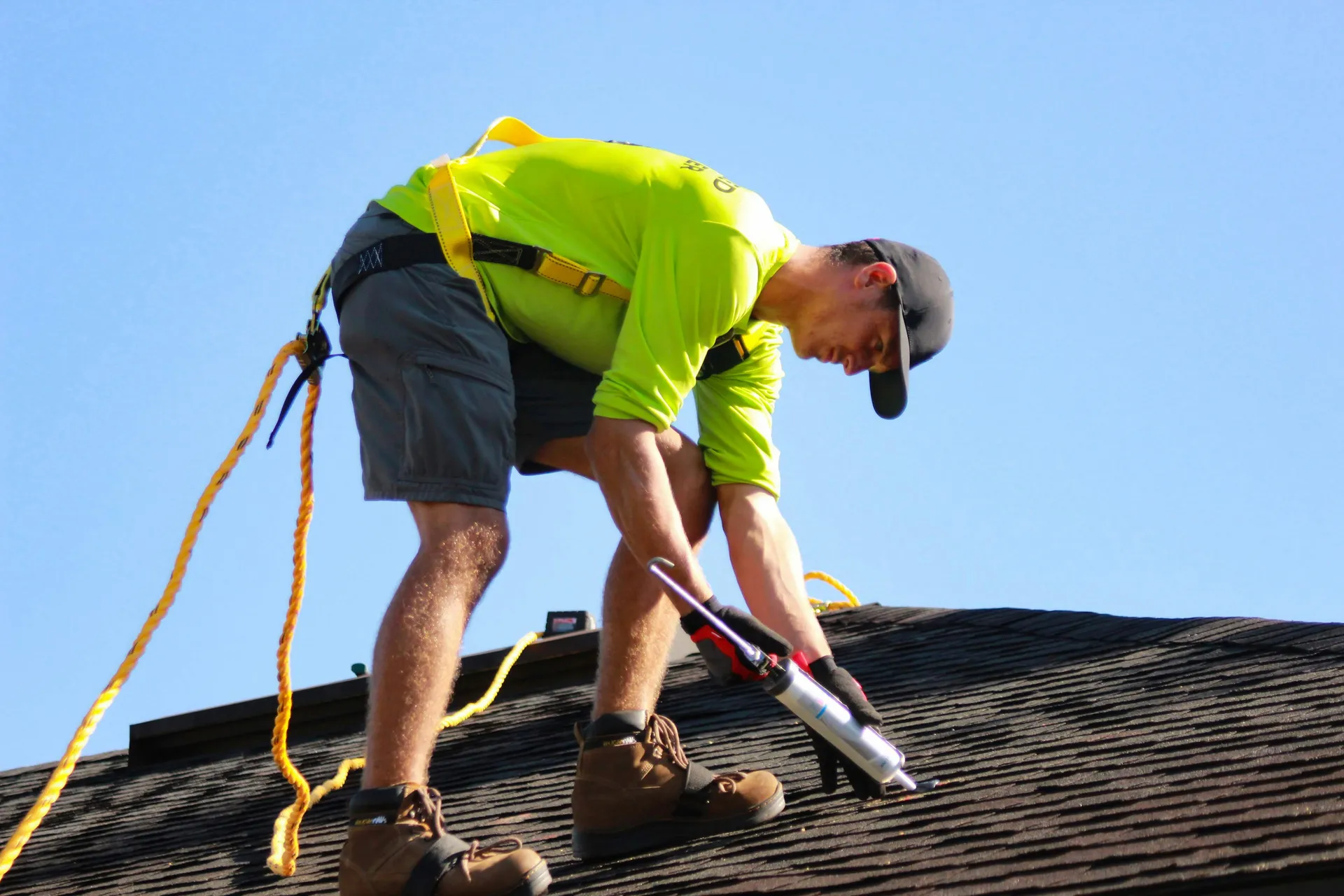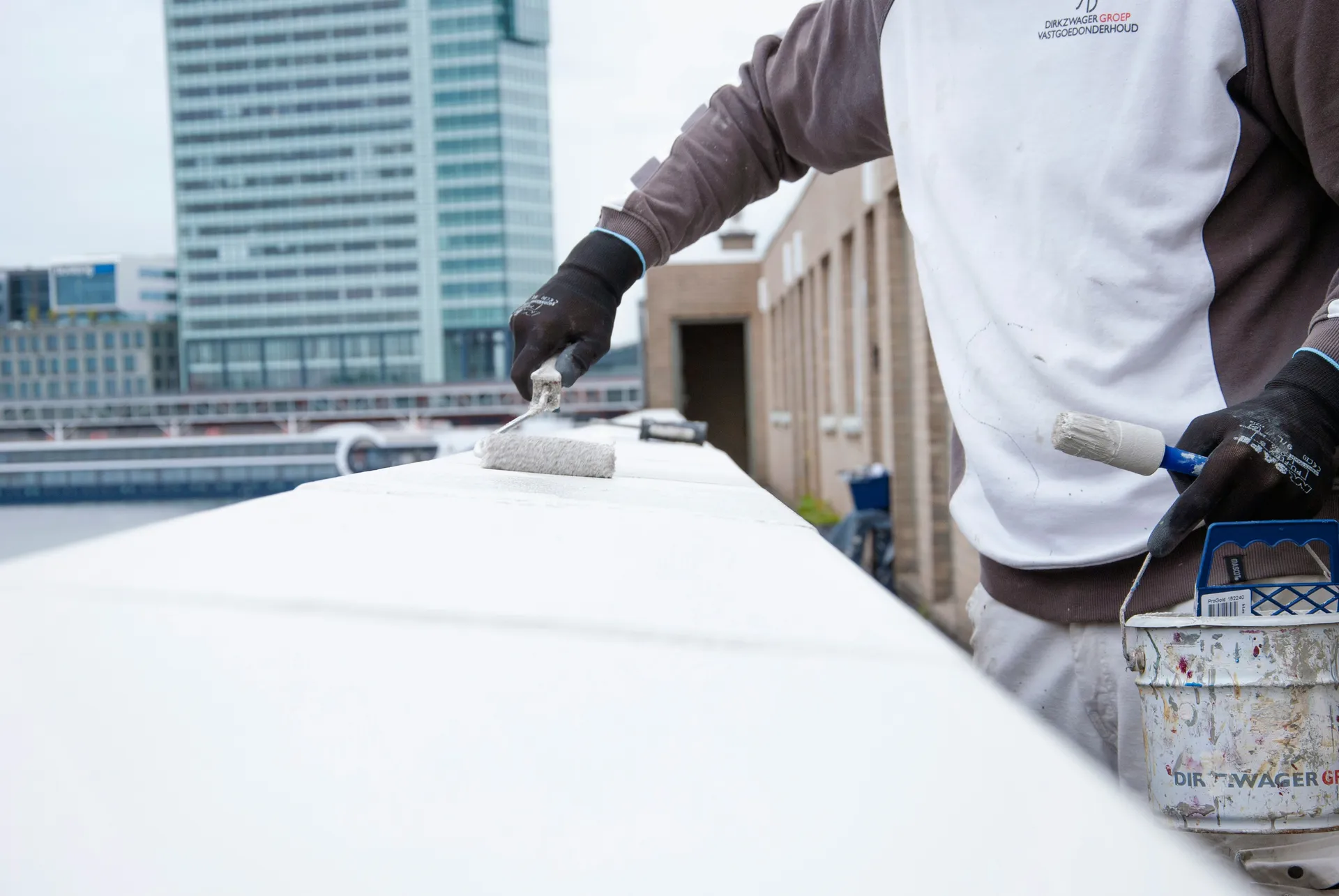
How to Repair a Commercial Roof: A Professional's Guide
Repairing a commercial roof is a high-stakes task where an improper fix can lead to far greater damage. This guide is not a DIY manual. Instead, as a building envelope specialist, I will walk you through the professional process: how to identify common problems, understand the repair methods used by certified roofers, and, most importantly, how to make the critical decision between repairing and replacing your roof.
This guide is designed as a decision-making tool for facility managers and property owners to help protect your significant investment.
Key Takeaways
- This is Not a DIY Job: Commercial roof repair requires specialized equipment, materials, and a deep understanding of safety protocols. Always hire a licensed professional.
- Problems are System-Specific: The most common failures depend entirely on your roof type (TPO, EPDM, Metal, etc.).
- Repair vs. Replace is a Financial Decision: The choice depends on the roof’s age, the extent of the damage, and your long-term asset management strategy.
- Maintenance is Cheaper Than Repair: A proactive maintenance plan is the most effective way to prevent costly, unexpected repairs and extend your roof’s lifespan.
Common Repair Issues by Roof System Type
Understanding your roof system is the first step to diagnosing a problem. Here are the most common failure points for major commercial roofing types.
TPO/PVC Roofs (Thermoplastic)
- Seam Failures: The welded seams between membrane sheets can separate due to improper installation or age.
- Punctures: Dropped tools, foot traffic, or wind-blown debris can create holes in the membrane.
- Flashing Issues: The flashing around HVAC curbs, vents, and parapet walls is a high-stress area prone to leaks.
EPDM Roofs (Rubber)
- Adhesive Failures: The adhesive used at the seams can fail over time, causing them to peel open.
- Punctures: Like TPO, EPDM is susceptible to punctures, which can be hard to spot on a black surface.
- Membrane Shrinkage: Over many years, the membrane can shrink, pulling away from edges and creating stress on the seams.
Modified Bitumen Roofs
- Blistering: Trapped moisture or air can heat up and create large bubbles or blisters on the surface.
- Cracking (“Alligatoring”): UV exposure and age can cause the surface to develop a pattern of cracks resembling alligator skin.
- Open Seams: The seams on torch-down or self-adhered systems can open up over time.
Metal Roofs
- Fastener Failures: Gaskets on screws can dry out and crack, or fasteners can back out, allowing water intrusion.
- Seam Separation: On standing seam roofs, the interlocking panels can separate due to thermal expansion and contraction.
- Rust & Corrosion: Scratches or failing coatings can expose the metal to the elements, leading to rust.
Overview of Professional Repair Techniques
Certified roofers use specific techniques and equipment tailored to each roof type.
- Heat Welding: The standard for TPO and PVC roofs. A specialized hot-air welder is used to melt the membrane at seams or patches, creating a single, monolithic layer.
- Seam Tapes & Adhesives: The primary method for repairing EPDM seams. This involves special primers, cleaners, and pressure-sensitive tapes to create a durable bond.
- Patching & Coatings: For modified bitumen, repairs involve patching with compatible material and asphalt-based cement. For all roof types, fluid-applied coatings can seal cracks and extend the roof’s life.
The Core Decision: Repair vs. Replace
This is the most critical assessment for any building owner. Use these signals as a guide for your decision-making process.
From a facility maintenance perspective, think of it this way: a repair is a short-term operational expense, while a replacement is a long-term capital investment. Chasing small repairs on an aging roof is often more expensive over five years than a full replacement. A proactive roof asset management plan is key to avoiding costly emergency repairs.
What to Expect: Common Commercial Roof Repair Costs
The following table outlines typical cost ranges for professional repairs performed by licensed commercial roofing contractors. Final pricing will vary based on your geographic location, the current condition of the roof, and ease of access.
| Professional Service | Typical Cost Range | What It Solves |
|---|---|---|
| Seam Repair | $500 - $1,500 | Fixes the most common leak source on TPO, PVC, or EPDM roofs. |
| Membrane Patch | $300 - $800 | Repairs a single leak point caused by a puncture or physical damage. |
| Metal Roof Fastener Replacement | $400 - $1,200 | Replaces aging, gasketed screws to address common sources of seepage. |
| Roof Coating Application | $2 - $5 per sq. ft. | A cost-effective way to extend roof life and seal minor cracks. |
| Flashing/Penetration Re-sealing | $750 - $2,000+ per unit | Fixes leaks at high-risk areas like HVAC curbs or vent pipes. |
Comparing repair vs. replacement? Use our roof replacement calculator to evaluate costs for different materials. For energy-conscious businesses, also check our solar panel calculator for rooftop solar potential.
Vetting Your Commercial Roofing Partner: A 5-Step Guide
For a commercial roof, the professionalism, safety record, and reliability of your roofing contractor are far more critical than simply choosing the lowest bid. This is about protecting a major asset. Use this checklist to thoroughly vet potential partners.


